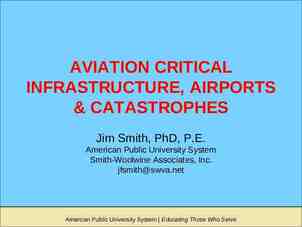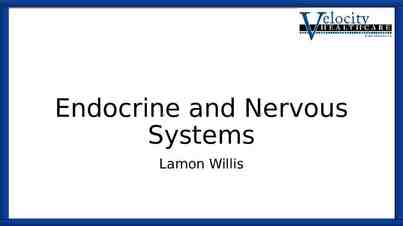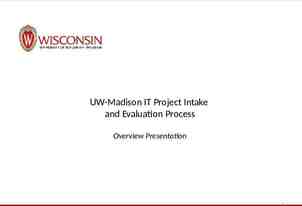Biosafety Program Management EMD Lecture #3
65 Slides985.50 KB

Biosafety Program Management EMD Lecture #3

Biosafety Program Institutional oversight & acceptance – President, CEO, CFO Institutional Biosafety Committee (IBC) – peer review, adopt/establish policies Biosafety Office – inform, administer program, assist Faculty, staff, students & visitors – merge biosafety into work

Related Compliance Entities IRB IACUC ICC Grants & Contracts Police, Security Other

Regulations/Responsibilities 1970 OSH Act – 5(a)(1) General Duty Clause Related OSHA Standards – PPE, BBP, EtO, Labels, HAZWOPER, etc. NIH Guidelines (rDNA) – Applicability, scope Transport – DOT, IATA, USDA, CDC/PHS, DoC, other

Regulations/Responsibilities Agencies – FDA, EPA, NIH OHRP, State, City Guidelines – CDC/NIH BMBL, CDC TB, APIC, WHO, NSF 49, etc. Training – BBP, TB, Shipping, Biosafety, Lab Safety, PPE, Infection Control, special hazards

Information to Employees Hazard awareness Risk (toxicity/disease), signs/symptoms Exposure limits/infectious dose Employer’s responsibilities Protective measures (controls) Medical surveillance/monitoring Emergency response procedures

Biosafety Program Management I GO WHERE I’M TOWED TO!

Biosafety Program Management IBC as DMV – speed limits, rules/regulations – registrations/renewals, fines Program is tow truck and pace car – safely deliver to desired location BSO as State Police – inform, assist, control, emergency response

Biosafety Program Management Employees – luxury, economy, SUV’s, dragsters, stalled, etc. AAA – Administrative support – Active (pro-active biosafety program awareness) – Accountability for compliance at all levels

Biosafety Program Management Adopt/mandate required policies Apply OSHA General Duty Clause elsewhere Establish policies where needed

Rationale Control hazards – Anticipate – Identify – Evaluate Prevent lab-acquired infections – Interaction – Proactive – Assumption of responsibility

Prevention Interaction – Registration/reauthorization – Initial and periodic training & inspections – Sanctions Evaluation – Risk assessment/risk management – Incidents/near misses

Risk Assessment & Risk Management Prior Planning Prevents Poor Performance

Risk Assessment & Risk Management Pathogen Procedures Personnel Place Protective Equipment

Ineffective Program Management Morbidity/mortality Perceived lack of institutional control Regulatory visit/action Legal action (civil/criminal penalties) Bad press Low morale

Biosafety Program Management “I go where I’m towed to!” – “Tell ‘em where you’re going to tow them” – “Tow ‘em where you want them” – “Tell ‘em why you’ve towed them there”

Identification of Biological Agents

Identification of Agents Department PI/Lab Director Type of Lab Lab Supervisor Building(s)/room(s) Phone/fax/email/campus address

Identification of Agents rDNA – exempt/non-exempt, IBC, NIH-OBA registration Human material – OSHA regulated, other Plants – low risk, plant pests, pathogens, USDA APHIS requirements

Identification of Agents Human Pathogens – Risk group – local, state, federal registrations Animals – natural infections – work with biohazards – work with animal pathogens

Identification of Agents Human subjects Healthcare/clinical locations Toxins of biological origin Shipping/transport of regulated agents Other?

Identification of Equipment Autoclaves Biosafety cabinets, clean benches, glove boxes Eyewashes, showers Centrifuge containment

Identification of Handlers Name, employee ID Number Campus address/contact information Identify work experience Observe work practices if necessary Refresher training as needed

Biosafety Database Management

Occupationally exposed workers Bloodborne Pathogen training (initial/annual) Biosafety Training (initial/periodic) HBV Vaccination program (other immunizations) TB Training, PPD Test Shipping/Transport Training (biennial) BSL3 Training/certification of researchers Select Agent registration/training/review

Equipment & Facilities Autoclave (location, testing) Clean air device (location, certification) biosafety cabinets, ventilated enclosures – repairs, moves BSL3 facilities – commissioning – annual air balancing – HEPA filter testing

Research Registration Comprehensive Biohazard Registration Form (all biological materials used) rDNA protocols (new, updates, new personnel) Human pathogens (biennial) Select Agent transfers (inventory, tracking) Inspections (semi-annual, annual) – BSL1, BSL2, BSL3, Animal, Select Agents

Institutional Documentation IBC minutes (subcommittee deliberations) Approval letters Safety Manuals (periodic updates) Incidents – Non-compliance reports – Accidents, exposure investigations and recommendations – Serious adverse events (human subjects)

Biosafety Manual

Biosafety Manual Introduction/Contact Info/Overview Responsibilities – Chairperson – Principal Investigator/Manager – Researcher/Employee – Safety Office – IBC

Biosafety Manual Requirements – – – – – – – Annual registration Human etiologic agents/select agents rDNA Regulated human material Biohazards in animals/USDA Regulated agents Clean air device program Training

Biosafety Manual Medical Surveillance/Employee Health – – – – – – – Screening Immunization Medical restrictions Serum storage Incident reporting/evaluation/follow-up Counseling Records

Biosafety Manual Risk Assessment/Risk Management – Biosafety levels – Routes of transmission – Signs/labels – Work practices – Personal protective equipment – Protective equipment/engineering controls

Biosafety Manual Decontamination – Disinfectants – Sterilization methods – Medical waste program – Treatment of mixed wastes

Biosafety Manual Spill/Emergency Response – Spill kits/training/preparation – BSL1, BSL2, BSL3 spill response – Mixed spills

Biosafety Manual Shipping/Transport – Clinical, diagnostic specimens – Etiologic agents, toxins of biological origin – Packaging – Shipping declaration forms – Import/export requirements

Biosafety Training

Biosafety Training Lab safety – chemical, biological, fire, security, incident response Biosafety – – – – human/animal pathogens RG2/BSL2 rDNA proficiency/competency

Biosafety Training Bloodborne Pathogens – Initial @ time of hire specific components of standard targeted to audience – Annual retraining – Sharps Safety Devices Evaluation & training

Biosafety Training BSL3 Training – work practices, PPE, controls – biosafety cabinet – facility operations – spill/incident response – formal evaluation of proficiency – inspection of proposed SOP

Biosafety Training Shipping/Transport of Infectious Substances – IATA (initial and every 2 years) – DOT (initial and every 3 years) labs working with etiologic & other regulated agents provide info to those handling clinical specimens – Shipper/transporter/receiver general awareness function specific

Biosafety Training Tuberculosis – At time of hire, screening – Infection control – Proposed annual training requirement – Respiratory protection – Healthcare and beyond!

Biosafety Training Effective Use of the Biosafety Cabinet – recommended – part of Biosafety training – can require based on audit results

Institutional Biosafety Committee

Role of the IBC Established by highest administrator Oversight for potentially hazardous work Set policy for safe conduct of biohazard research Oversee rDNA projects; ensure compliance Responsibilities not restricted to rDNA

IBC Membership (NIH rDNA) varied disciplines (rDNA, microbiology, lab safety, engineering, lab technical staff, legal, community) 5 members (2 from community) plant pathogen/containment expertise animal containment expertise biosafety officer if BL3/BL4 or large scale

IBC Membership consult with other scientists as needed annual report to NIH/OBA suggest opening meetings to public minutes available to public upon request

Suggested IBC Subcommittees Human Gene Transfer Clinical Trials Xenotransplantation Medical Surveillance Biosafety Level 3 All report back/through IBC

IBC Function review rDNA research assess physical/biological containment level assess: – – – – facilities procedures practices training/expertise of personnel

IBC Function Infectious agents, toxins, other biohazards – – – – – review PI written risk assessment perform risk assessment/assign RG or BSL train personnel, verify proficiency, retrain inspect proposed work practices/area periodically monitor Design/commissioning containment labs – annual verification

IBC Function periodically review rDNA research adopt emergency response plans report significant accidents/illnesses to state local public health agencies & NIH/OBA report significant problems/violations of guidelines to NIH/OBA

IBC Function communicate results of review to PI don’t authorize initiation of work not covered by guidelines w/out NIH review ensure compliance with surveillance data reporting for human gene transfer projects

IBC Function Sanctions – establish framework in advance – develop with related institutional entities – acquire administrative backing – perform case by case review – work with & prevent repeat – document, file, and report to required bodies

Communication with Related Committees/Groups NIH OBA, OHRP FDA CBER CDC, USDA IACUC IRB Grants & Contracts

Occupational Health Program

Goals of Health Program prevention of occupational illness and injury early recognition of health alterations due to exposure prompt treatment and management of occupational illness/injury

Occupational Health Program identify employees at risk – medical history compared to hazards of position pre-placement medical evaluation – baseline health information – pre-existing conditions determine need for medical surveillance schedule update of work/health history

Occupational Health Program understand the risks faced by employees inform of hazards and methods of protection educate on warning signals of illness (prompt visit to health clinic) clear procedure for reporting incidents and exposures

Medical Evaluation BL3, BL4, non-human primate handlers, respirator users pre-assignment/periodic evaluations – immunization status – base-line tests (TB, biochemical analysis, serology) – high risk medical conditions (GI disorders, pregnancy, immunosuppressive drugs, etc)

Immunizations effective vaccine condition of employment? evidence of antibody response before starting work booster or revaccination as necessary

Serum Storage potential to monitor serological changes resulting from employee’s exposure sample at time of hire, annually, after overt exposure, at termination test at time of collection if agent produces known serological response confidential informed consent (may decline)

Report of seroconversion examine worker investigate procedures revise procedures to eliminate exposure

Accidents & Illnesses prompt reporting immediate medical assistance – serum samples, stool specimens, nasal and skin washings investigate serious, unusual or extended illnesses

Employee Health Records confidential exposure reports serious illnesses maintain for duration of employment plus 30 years







